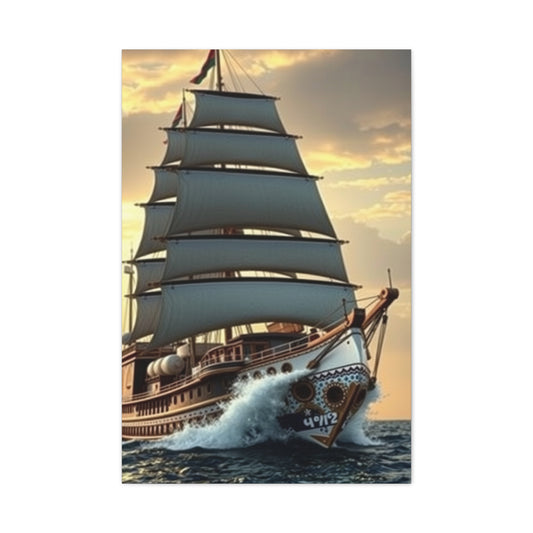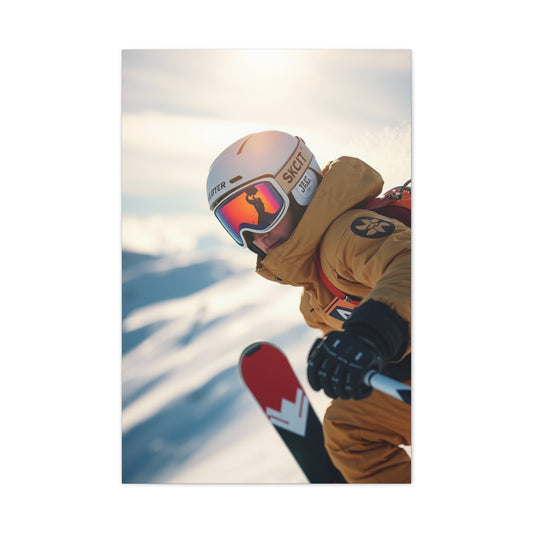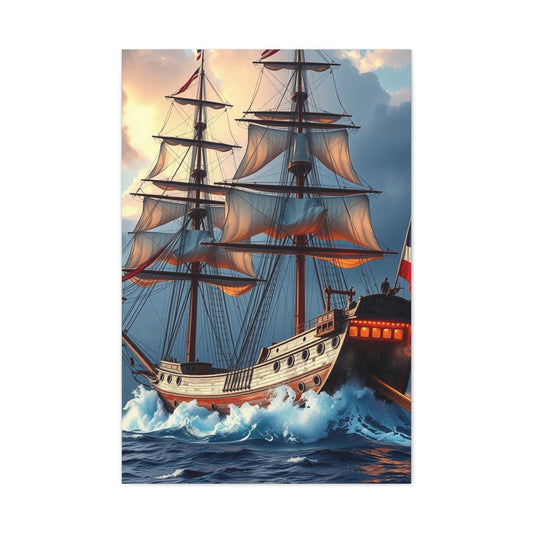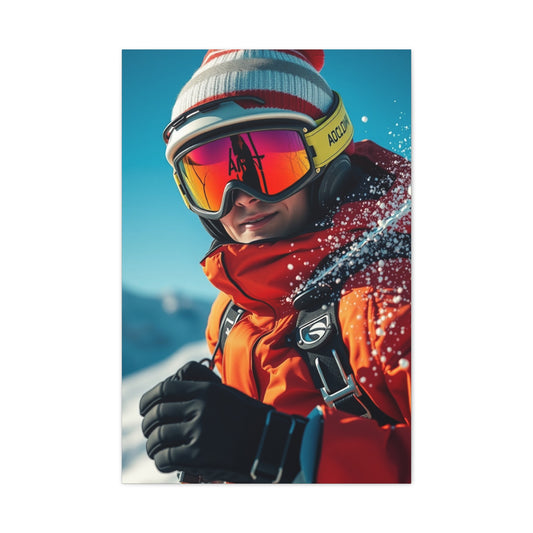Professional screen printing has evolved into a refined craft where precision, creativity, and material science intersect. Water-based inks have become a defining choice for artists and production studios seeking soft-hand prints, vibrant color payoff, and environmentally responsible workflows. Screentec Aqua Art Water-Based Inks stand out because they balance technical performance with artistic freedom, allowing printers to achieve gallery-quality results on fabric while maintaining efficiency. This first part of the series explores the philosophy, preparation mindset, and creative advantages behind professional water-based screen printing, setting a strong foundation for mastery.
Screen printing with water-based systems requires a shift in thinking compared to plastisol methods. Instead of relying on heavy ink deposits, success comes from mesh selection, ink control, humidity awareness, and thoughtful curing. Aqua Art inks reward printers who understand these variables by producing prints that feel integrated into the fabric rather than sitting on top of it. This integration is what elevates a print from commercial to professional grade.
Understanding The Unique Nature Of Aqua Art Inks
Screentec Aqua Art Water-Based Inks are engineered to penetrate fibers while retaining opacity and color vibrancy. This dual performance allows artists to print on both light and dark garments with confidence when proper underbases and additives are used. Unlike thicker ink systems, these inks flow smoothly through higher mesh counts, enabling fine detail reproduction and tonal transitions that feel painterly rather than mechanical.
The water-based chemistry encourages experimentation with texture, layering, and transparency. Printers can achieve effects similar to illustration, watercolor, and even photographic rendering. This opens creative pathways that align screen printing more closely with fine art practices. Many professionals compare the planning stage of water-based printing to composing photographic layouts, where negative space and balance matter as much as ink coverage.
Inspiration for layout precision and compositional discipline can be found in resources like this guide to square photo print layouts, which highlights how proportion and framing influence visual impact.In today’s evolving screen printing industry, achieving professional-quality results requires more than technical skill alone—it demands the right materials, a refined process, and a forward-thinking mindset. As brands, designers, and consumers increasingly prioritize quality, comfort, and sustainability, printers are challenged to deliver prints that not only look exceptional but also feel premium and align with modern environmental standards. Screentec Aqua Art Water-Based Inks have emerged as a powerful solution for printers seeking to elevate their craft while meeting these growing expectations.
Preparing Your Workspace For Consistent Results
Professional outcomes begin long before ink touches fabric. Water-based inks demand controlled conditions, especially regarding temperature and humidity. A well-prepared workspace ensures ink remains open on the screen long enough to print smoothly while avoiding premature drying. Maintaining airflow without direct fans on screens is critical, as is organizing tools to minimize downtime between pulls.
Screen preparation also plays a defining role. Proper degreasing, consistent emulsion coating, and accurate exposure ensure stencil durability during longer print runs. Because water-based inks are more aggressive on emulsions, selecting a water-resistant emulsion designed for extended runs is essential. This attention to preparation is what separates casual printing from professional execution.
Creative environments also benefit from visual inspiration. Color harmony and spatial awareness can influence ink mixing decisions, as demonstrated by curated palettes like those found in blue yellow art collections, where contrast and balance guide aesthetic choices.
Mesh Selection And Detail Control
Mesh count selection is one of the most important decisions when working with Aqua Art inks. Higher mesh counts allow for finer detail, smoother gradients, and reduced ink deposit, which is ideal for soft prints. Lower mesh counts are reserved for bold graphics or underbases on darker fabrics. Understanding when to adjust mesh rather than ink viscosity is a hallmark of professional practice.
Detail control also extends to squeegee choice and printing angle. Softer squeegees paired with higher mesh counts allow ink to shear cleanly through the stencil, preserving edges and tonal integrity.
This technique mirrors photographic sharpness principles often discussed in resources like top architecture photography profiles, where clarity and structure define professional imagery.Water-based printing has transitioned from a niche technique to a professional standard embraced by experienced printers worldwide. Unlike traditional plastisol inks, which sit on the surface of the fabric, water-based inks absorb into the fibers, creating soft, breathable prints with a natural hand feel.
Screentec Aqua Art Water-Based Inks are specifically engineered to enhance this advantage, offering vibrant color payoff, excellent coverage, and reliable performance across a wide range of textile applications. For printers focused on premium apparel, fashion garments, and high-end custom work, these inks provide a distinct competitive edge.
Color Mixing And Visual Storytelling
Color is more than pigment; it is narrative. Aqua Art inks are designed to mix cleanly, allowing printers to create custom palettes that reinforce brand identity or artistic intent. Professional printers document their mixes carefully, ensuring repeatability across runs. Transparency bases can be used to build layered hues, adding depth and sophistication to prints.
Visual storytelling benefits from understanding how colors interact in real environments. Considering how a printed garment will be worn and perceived under different lighting conditions helps refine color choices. Inspiration for contextual placement and ambiance can be drawn from ideas like those shared in creative foyer art inspiration, where mood and placement shape perception.What sets Screentec Aqua Art apart is its balance between artistic freedom and production efficiency. The ink system is designed to support both creative experimentation and consistent output, allowing printers to achieve fine detail, smooth gradients, and layered effects without compromising durability.
Whether producing short-run custom prints or managing larger-scale commercial jobs, Aqua Art inks adapt seamlessly to professional workflows. Their smooth viscosity and screen stability help reduce common challenges such as clogging and uneven coverage, making them suitable for printers who demand precision and reliability.
Achieving Texture And Artistic Depth
One of the greatest strengths of water-based screen printing is its ability to create texture without heaviness. Through controlled flooding, varied squeegee pressure, and strategic layering, printers can simulate brush strokes, grain, and fabric-enhanced effects. Aqua Art inks respond beautifully to these techniques, rewarding experimentation.
Texture-driven printing aligns closely with illustration and drawing disciplines. Artists familiar with pen and ink techniques often transition seamlessly into water-based printing because both rely on pressure control and layering. Insight into these parallels can be found in resources like Pitt pen texture layering, which emphasize intentional mark-making.Beyond performance, the Aqua Art range reflects the industry’s shift toward responsible printing practices. Free from PVC and phthalates, these inks support safer working environments and reduced environmental impact.
Cleanup with water instead of harsh chemicals simplifies shop maintenance and aligns with sustainability goals increasingly valued by clients and consumers alike. As regulations tighten and eco-conscious branding becomes more influential, adopting water-based ink systems like Screentec Aqua Art is both a practical and strategic decision.
Printing On Diverse Fabric Types
Professional screen printers must adapt techniques based on fabric composition. Cotton, blends, and specialty textiles each respond differently to water-based inks. Aqua Art inks excel on natural fibers, where absorption enhances softness and longevity.
Understanding fabric behavior also informs design choices. Minimalist graphics often shine on textured fabrics, while detailed illustrations benefit from smoother surfaces. Visual references from artistic products such as the expressive imagery behind the bear illustration print can inspire thematic alignment between fabric and design.For blends, additives and adjusted curing profiles ensure durability without compromising feel.
Maintaining Ink Performance During Long Runs
Long print runs test consistency and discipline. Water-based inks require periodic misting and careful monitoring to prevent drying in the screen. Professional printers develop rhythms that balance speed with control, ensuring each print matches the last. This consistency builds trust with clients and reinforces brand reliability.
Breaks between runs should be intentional, with screens flooded and covered to maintain moisture. These habits mirror best practices in creative production workflows, similar to managing visual continuity as seen in thematic collections like the cactus cowgirl visual theme, where cohesion defines appeal.
Curing And Wash Durability
Curing is the final technical step that determines longevity. Aqua Art inks require thorough drying and proper heat curing to ensure wash fastness. Forced air dryers or conveyor dryers set at appropriate temperatures allow water to evaporate fully, bonding pigment to fiber. Under-curing leads to fading, while over-curing can damage fabric.
Testing prints through wash cycles is a professional standard, not an afterthought. This quality assurance mindset aligns with the refined presentation standards found in curated aesthetics like blush blueberry color harmony, where durability and beauty coexist.
Building A Signature Printing Style
As technical mastery grows, printers naturally develop a signature style. This style emerges from consistent choices in color palettes, textures, and subject matter. Aqua Art inks support this evolution by offering versatility without compromising quality. Over time, printers move beyond replication into innovation.
Cultural and artistic influences often shape signature styles. Exploring global aesthetics can enrich creative direction, much like the inspiration drawn from African elegance interior design, where tradition and modernity blend seamlessly.
Expanding Creative Possibilities With Technique
Professional growth comes from continuous experimentation. Techniques such as wet-on-wet printing, discharge-style effects, and tonal layering push the boundaries of what water-based inks can achieve. Aqua Art inks are formulated to support these explorations while maintaining stability.
Photographic principles often guide advanced techniques, especially when translating images into printable artwork. Learning from visual disciplines broadens perspective, as seen in discussions of advanced photography techniques, where experimentation fuels mastery.This advanced approach also encourages experimentation and refinement. Aqua Art inks respond exceptionally well to techniques such as tonal layering, subtle gradients, and discharge-style effects, enabling printers to create depth and nuance that elevate a design from ordinary to memorable.
Mastery involves balancing moisture control, flash times, and print order to maintain consistency without sacrificing artistic expression. These inks demand awareness and adaptability, turning the printing process into a craft rather than a routine.
Professional Presentation And Final Output
The final presentation of a printed garment reflects every decision made throughout the process. From design conception to curing, each step contributes to perceived value. Professionals consider how prints will be displayed, packaged, and experienced by the end user. This holistic approach transforms printing into a complete creative service.
Understanding presentation standards across visual industries reinforces this mindset. Insights into depth and structure, similar to those explored in gallery wrap canvas depth, highlight how finishing choices elevate work from ordinary to exceptional.
This first part establishes the philosophical and technical groundwork for achieving professional screen prints with Screentec Aqua Art Water-Based Inks. The next part will dive deeper into advanced techniques, troubleshooting, and workflow optimization to further refine professional outcomes.
Advancing Your Water-Based Printing Mindset
As printers move beyond foundational skills, professional water-based screen printing becomes a dialogue between intention and execution. Screentec Aqua Art Water-Based Inks reward printers who think conceptually, not just technically. At this stage, every decision is deliberate, from ink opacity to the emotional tone of the artwork. Color is no longer chosen simply for visibility, but for how it interacts with fabric texture, lighting, and wear over time. Printers begin to anticipate how the ink will absorb into fibers, soften after curing, and age through repeated washes, allowing the final garment to tell a more authentic story.
Advanced printers begin to approach garments as moving compositions. How the print folds, stretches, and interacts with the wearer matters. This mindset aligns closely with mixed-media thinking, where multiple elements work together to create a unified result, similar to the layered expressiveness seen in an eye mixed media artwork. Printing is no longer about reproducing an image but about translating feeling, depth, and narrative onto fabric.
Ultimately, working at this level transforms screen printing into a form of visual communication. Screentec Aqua Art Water-Based Inks become a medium for expression, translating creative intent into tactile, wearable art. Printers who embrace this mindset move beyond production and into authorship, delivering prints that resonate emotionally, perform reliably, and reflect a mature, professional standard.
Refining Detail Through Visual Sensitivity
At a professional level, detail is not about complexity but clarity. Aqua Art inks allow for subtle transitions, soft edges, and tonal refinement when printers respect the balance between mesh, pressure, and ink flow. Fine details emerge best when the printer understands restraint, knowing when to let fabric texture speak for itself.
This sensitivity mirrors close-up visual studies where minimal elements carry maximum impact. Observing how focus and texture interact in imagery such as a fox close-up portrait can inform how fine lines and highlights are preserved during printing.
Developing Narrative Through Color And Space
Professional prints tell stories through color relationships and spatial rhythm. Negative space becomes as important as printed areas, guiding the viewer’s eye naturally across the design. Aqua Art inks excel in this area because they integrate into fabric, allowing space to breathe rather than feel blocked by heavy ink layers.
Printers who explore environmental themes often use muted palettes and organic spacing to evoke atmosphere. Inspiration for this approach can be found in the calm visual storytelling of countryside inspired artwork, where openness and balance define emotional tone.
Expressive Human-Centered Printing
When working with figurative or human-inspired designs, emotional subtlety becomes paramount. Water-based inks are particularly suited for these prints because they avoid the rigid, plastic feel that can flatten expression. Instead, they support softness and nuance, which enhances intimacy in the artwork.
Understanding posture, gesture, and mood can dramatically improve print outcomes. Photographic studies such as those discussed in boudoir pose guidance reveal how small adjustments in form can shift emotional impact, a principle that translates directly into print design.
Layering Techniques For Depth And Dimension
Advanced layering is where Aqua Art inks truly shine. By printing semi-transparent layers in succession, printers can build visual depth that feels almost three-dimensional. Each layer must be cured carefully to avoid muddying colors while maintaining cohesion across the design.
This approach parallels digital compositing, where images are built gradually through intentional layering. Conceptual similarities can be drawn from workflows explained in photo composite creation, emphasizing patience and precision.
Integrating Movement And Modern Concepts
Professional screen printing increasingly intersects with contemporary art ideas, including motion and interactivity. While garments themselves are static objects, the way prints move with the body introduces a dynamic element. Aqua Art inks support this by maintaining flexibility and softness even after repeated wear.
Thinking about prints as evolving visuals rather than fixed images opens new creative pathways. Concepts similar to those explored in interactive visual displays can inspire printers to design graphics that change perception as the garment moves.
Nature-Inspired Imagery And Emotional Resonance
Nature themes remain powerful because they connect viewers to familiarity and symbolism. Printing wildlife or landscapes with water-based inks enhances this connection by preserving organic texture and softness. Aqua Art inks allow printers to capture subtle gradients found in natural imagery without overwhelming the fabric.
Emotional resonance often comes from scale and context, as seen in artwork like the bear mountain scene, where environment and subject work together to create quiet strength. Translating this balance into print design elevates its impact.
Capturing Quiet Moments And Stillness
Not all professional prints demand bold statements or high-contrast visuals. Some of the most compelling and enduring designs are those that embrace stillness, restraint, and simplicity. These prints rely on subtle composition, negative space, and quiet detail to communicate meaning, allowing the wearer to discover the design gradually rather than all at once. In a visual culture saturated with noise and immediacy, such understated work offers a refreshing sense of calm and intention.
Water-based inks are particularly well suited to this approach because of the way they merge seamlessly with the fabric. Instead of forming a raised or glossy surface, the ink becomes part of the textile itself, leaving behind an image that feels natural, worn-in, and personal from the first wear. This integration enhances the authenticity of minimalist designs, reinforcing their quiet confidence and emotional accessibility.
Observing gentle, intimate visuals such as a sleeping cat illustration can guide printers toward designs that value calmness and subtle storytelling over visual noise.Screentec Aqua Art Water-Based Inks further elevate these moments of simplicity through their refined tonal control and soft finish. Subtle shades, low-contrast graphics, and gentle textures retain clarity without overpowering the garment. The result is a print that invites repeated wear and close attention, aging gracefully alongside the wearer. By allowing the ink to disappear into the fabric, printers can create designs that feel timeless, intimate, and deeply connected to everyday life.
Printing For Connection And Shared Experience
Professional printing often involves creating pieces that resonate with shared human experiences, using garments as vessels for connection rather than mere visual statements. Themes such as relationships, memory, companionship, and belonging rely on subtlety and sensitivity to feel genuine. When these ideas are expressed through thoughtful design and material choice, the printed garment becomes emotionally accessible, encouraging wearers to form a personal bond with the artwork.
Screentec Aqua Art Water-Based Inks play a significant role in reinforcing these emotional themes. Their soft hand feel and breathable finish make prints inviting to touch, supporting designs meant to be experienced closely rather than observed from a distance. Because the ink absorbs into the fabric, the imagery feels integrated and familiar, mirroring the way memories and relationships settle naturally into everyday life. This physical softness strengthens the emotional message, making the design feel comforting and sincere.
Visual storytelling centered on connection can draw inspiration from collections like couple inspired artwork, where composition emphasizes unity and balance, concepts that translate effectively onto garments.Additionally, Aqua Art inks allow for gentle transitions, muted tones, and layered transparency, which are especially effective when exploring nuanced human narratives. These visual qualities help convey warmth, intimacy, and reflection without overstating the concept. By aligning tactile experience with emotional intent, professional printers can create garments that do more than communicate ideas—they foster closeness, evoke shared understanding, and transform screen printing into a deeply human form of expression.
Creating Thoughtful Prints For Reflective Spaces
As printers mature, they often design with specific environments and moments in mind. Garments created for relaxed, contemplative settings benefit from understated graphics, balanced compositions, and harmonious color palettes that feel intentional rather than attention-seeking. Screentec Aqua Art Water-Based Inks support this refined approach by producing finishes that integrate naturally into the fabric.
Designing with intellectual or reflective audiences in mind aligns with visual approaches discussed in home library design ideas, where subtlety and depth create lasting appeal.Their soft hand feel and subtle tonal quality help prints feel calm, wearable, and authentic. Instead of appearing overly commercial or mass-produced, the final garments communicate thoughtfulness, purpose, and a quiet confidence that resonates with discerning audiences.
Mastery Through Long-Term Creative Vision
The final stage of professional screen printing with Screentec Aqua Art Water-Based Inks is not about learning new tools but about refining vision. At this level, printers think in years rather than projects. Every print contributes to a broader creative identity, and consistency becomes as important as innovation. Aqua Art inks support this long-term growth by offering reliability, adaptability, and a tactile quality that evolves beautifully with experience.
Professional printers begin to treat experimentation as structured exploration. Small tests, controlled risks, and intentional constraints lead to breakthroughs that feel organic rather than forced. This mindset mirrors creative disciplines where playful curiosity drives mastery, much like the imaginative approaches highlighted in toy photography creativity tips, where scale and perspective redefine storytelling.Another strength of Aqua Art inks lies in their controlled unpredictability. Slight variations in absorption, pressure, or layering can enhance the uniqueness of each print, reinforcing the handmade quality that abstract work often seeks.
Rather than flaws, these nuances become part of the visual language, signaling authenticity and intentional craft. Printers who understand this dynamic can guide the process without over-controlling it, allowing the ink to contribute creatively to the final outcome.
Workflow Optimization For Sustainable Practice
As volume and reputation grow, efficiency becomes essential. Sustainable workflows protect creativity from burnout. With water-based inks, this means optimizing screen prep schedules, reclaiming processes, and print sequencing to reduce downtime. Aqua Art inks perform best when printers respect rhythm, allowing space for drying, cleaning, and recalibration without rushing results.
Sustainability is not only technical but mental. Artists who document processes and reflect on progress gain clarity over time. Sketchbooks, test swatches, and notes become creative assets. This reflective approach aligns with the evolution documented in artist sketchbook journeys, where growth is visible through accumulated practice.Screentec Aqua Art Water-Based Inks excel in abstract printing because of their natural responsiveness and nuanced behavior on fabric.
Their ability to produce layered transparency allows colors to overlap and interact in subtle ways, creating depth without heaviness. Soft blending edges replace hard lines, giving prints a fluid, organic quality that feels alive rather than mechanical. These characteristics make Aqua Art inks especially effective for tonal studies, atmospheric compositions, and designs inspired by nature, movement, or emotion.
Abstract Thinking And Emotional Impact
Advanced printing often moves beyond literal representation into abstraction, where meaning is suggested rather than stated. In this realm, the printer becomes both technician and interpreter, shaping visual experiences that rely on emotion, memory, and personal perception. Abstract design encourages viewers to slow down, engage, and form their own interpretations, transforming a garment from a decorative object into a reflective medium. This shift from clarity to suggestion creates space for deeper emotional resonance and long-term relevance.
Designers working abstractly focus on mood, movement, and internal rhythm. Visual inspiration can emerge from symbolic imagery such as an eye waterfall abstraction, where emotion flows through form rather than narrative clarity.Abstract prints produced with Aqua Art inks invite interaction rather than passive consumption. Because the designs are open-ended, wearers project their own meanings onto the imagery, forming a personal connection that evolves over time. The softness of the ink further strengthens this bond, as the garment feels comfortable, familiar, and expressive from the first wear.
In this way, abstraction paired with Aqua Art inks transforms screen printing into an emotionally engaging experience—one that values interpretation, presence, and human connection over immediate visual impact alone.
Color Memory And Environmental Influence
Professional printers develop a strong relationship with color memory, understanding how hues feel rather than just how they appear. Aqua Art inks respond sensitively to environmental conditions, which encourages printers to adjust based on light, season, and atmosphere. This awareness deepens color intelligence over time.
Environmental storytelling through color connects prints to place and time. Warm gradients, dusty tones, and expansive palettes often reference landscape and climate. The emotional pull found in visuals like a desert sunset scene demonstrates how color alone can evoke memory and belonging.
Cultural Motifs And Identity Expression
As printers mature, many explore cultural symbolism and heritage within their work. Water-based inks lend themselves well to these explorations because of their softness and authenticity. Prints feel less manufactured and more personal, which resonates when expressing identity-driven themes.
Western iconography, for example, carries strong associations of freedom and resilience. Drawing from visual traditions similar to those found in cowboy themed collections can inform graphic language while allowing modern reinterpretation through contemporary printing techniques.Screentec Aqua Art Water-Based Inks naturally support this sense of intimacy. Their soft hand feel and breathable finish encourage interaction, making garments feel welcoming rather than precious. Because the ink integrates into the fabric instead of sitting on top, prints become part of the garment’s identity, aging gracefully alongside the wearer. This reinforces the idea of shared experience, where the story behind the design evolves through daily use rather than remaining static.
Printing For Community And Shared Narratives
Professional screen printing often extends beyond individual expression into community storytelling, where garments become shared symbols rather than isolated design pieces. Through collaborative projects, limited-edition releases, and collections built around common themes, printers can foster meaningful connections between creators and audiences. These projects thrive on authenticity and accessibility, inviting people not just to view the artwork, but to live with it. In this context, the print must feel personal, comfortable, and enduring—qualities that enhance emotional attachment and repeated wear.
Designs centered on friendship, memory, and shared experience benefit from subtlety and warmth. Conceptual inspiration can come from visual storytelling approaches like those explored in best friendship photoshoot ideas, where authenticity outweighs polish.For community-driven projects, durability and consistency are just as important as aesthetics. Aqua Art inks deliver reliable wash fastness and color stability, ensuring that each piece within a collaborative run maintains its integrity over time.
This consistency strengthens trust between printer and audience, allowing screen printing to function as a medium for connection, collective memory, and cultural dialogue rather than display-only admiration.
Mood-Driven Design And Calm Aesthetics
At the highest level, many printers intentionally design for emotional well-being, using mood-driven aesthetics to create a sense of balance and calm. Soft color palettes, gentle gradients, and breathable compositions help counteract the visual noise of modern culture, allowing garments to feel thoughtful rather than overwhelming. Screentec Aqua Art Water-Based Inks naturally support this design philosophy through their ability to blend seamlessly into fabric, producing subtle, refined finishes.
Mood-driven design often draws inspiration from interior and lifestyle aesthetics. Soft, balanced tones similar to those discussed in calming color concepts can guide printers toward prints that feel restorative rather than attention-seeking.Their muted elegance enhances tonal depth without harsh contrast, enabling printers to create prints that feel organic, comforting, and emotionally resonant while maintaining a professional, high-quality appearance.
Translating Dreams Into Wearable Art
Some of the most compelling professional work draws from subconscious imagery. Dreams, fragments, and surreal impressions translate beautifully through water-based printing, where edges can blur and colors can drift naturally. Aqua Art inks support these dreamlike qualities by allowing fluid transitions and layered ambiguity.
This approach invites printers to trust intuition alongside technique. Conceptual parallels exist in visual explorations like dream inspired visuals, where imagination shapes form without strict logic.Achieving professional screen prints, however, is not solely about choosing the right ink—it is about understanding how that ink behaves and how it integrates into every stage of the printing process. From mesh selection and stencil preparation to curing and garment handling, Aqua Art inks reward printers who approach their craft with intention and control. This makes them ideal for printers ready to move beyond basic techniques and embrace a higher standard of quality.
This introduction sets the foundation for exploring how Screentec Aqua Art Water-Based Inks empower printers to produce refined, durable, and visually compelling prints. By combining performance, sustainability, and creative versatility, these inks redefine what it means to achieve truly professional screen printing results in today’s competitive market.
Balancing Precision With Expression
True mastery lies in balancing control with freedom. Aqua Art inks are forgiving enough to allow expressive marks yet precise enough to deliver consistency. Professional printers learn when to measure and when to release, creating work that feels alive rather than mechanical.
This balance is evident in abstract wildlife interpretations such as a fox abstract portrait, where recognizable form dissolves into texture and emotion, a principle that translates powerfully into printmaking.
Longevity, Legacy, And Artistic Confidence
The final measure of professional success is longevity. Prints should age gracefully, workflows should remain sustainable, and creativity should continue to evolve. Aqua Art inks support long-term durability both physically and artistically, allowing printers to build bodies of work that feel cohesive over time.
Confidence grows when printers trust their process and voice. Quiet, personal imagery often signals this maturity, as seen in contemplative visuals like a cat home illustration, where simplicity carries depth.Achieving professional screen prints, however, is not solely about choosing the right ink—it is about understanding how that ink behaves and how it integrates into every stage of the printing process. From mesh selection and stencil preparation to curing and garment handling, Aqua Art inks reward printers who approach their craft with intention and control. This makes them ideal for printers ready to move beyond basic techniques and embrace a higher standard of quality.
Conclusion
In conclusion, Screentec Aqua Art Water-Based Inks provide a reliable and professional solution for screen printers seeking high-quality results with an environmentally responsible approach. As the screen printing industry continues to evolve, the demand for inks that deliver excellent print performance while meeting sustainability standards has grown significantly. Aqua Art inks successfully meet these expectations by combining superior print quality, user-friendly application, and eco-conscious formulation.
One of the most notable advantages of Screentec Aqua Art Water-Based Inks is their ability to produce soft, breathable prints with a smooth hand feel. Unlike traditional plastisol inks that sit heavily on the fabric surface, Aqua Art inks penetrate the fibers, resulting in prints that feel natural and comfortable to wear. This characteristic is particularly valuable for fashion garments, activewear, and premium apparel where comfort and aesthetics are essential. The inks also offer excellent color vibrancy and opacity, ensuring designs remain visually striking across a wide range of fabrics.
From a technical standpoint, Aqua Art inks are designed to perform consistently in professional screen printing environments. They offer good screen stability, smooth flow through fine mesh counts, and reliable curing when proper drying conditions are maintained. Their versatility allows printers to work on cotton, blends, and other suitable textiles with confidence. Additionally, these inks support various printing techniques, including detailed graphics and layered prints, making them suitable for both small custom shops and large-scale production facilities.
Another key benefit lies in the environmental and workplace advantages of water-based ink systems. Screentec Aqua Art inks are free from PVC and phthalates, reducing harmful emissions and contributing to a safer working environment for printers. Cleanup is simpler and more cost-effective, requiring only water rather than harsh solvents. This not only minimizes environmental impact but also streamlines daily operations, saving time and resources in the long run.
Achieving professional results with Aqua Art inks ultimately depends on proper handling, preparation, and process control. Attention to factors such as mesh selection, stencil quality, ink management, and curing temperature ensures consistent and durable prints. When these best practices are followed, Screentec Aqua Art inks reward printers with exceptional wash fastness, durability, and long-lasting color performance.
Overall, Screentec Aqua Art Water-Based Inks represent a forward-thinking choice for modern screen printers. They bridge the gap between performance and sustainability without compromising on quality or efficiency. By adopting these inks and mastering their application, printers can elevate their work, meet customer expectations, and contribute positively to a more responsible printing industry. Whether for creative experimentation or commercial production, Aqua Art inks empower printers to achieve professional screen prints that stand out in both appearance and integrity.
























